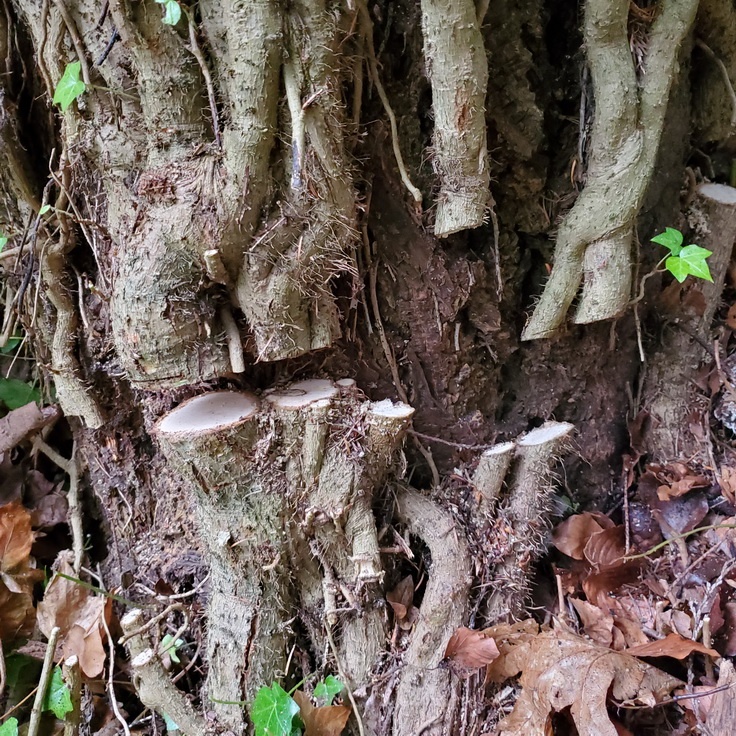How Old is Old-Growth Ivy?
While sawing through a 3 ½ inch diameter Ivy stem yesterday, I wondered how long it had taken to get so big. It was the largest of several large woody vine stems going up an approximately 60-year-old Douglas Fir, branching into dozens of gradually smaller stems, wrapping and crisscrossing as they climbed into the upper reaches of the tree high overhead.
When I first saw Ivy growing up trees in the Puget Sound forests, I thought that people planted it because they liked the way it looked. Now I don’t think so. I’ve found too many trees deep in the forest burdened with masses of Ivy, and I think in most cases it started from seeds deposited by birds resting in the trees after feeding on Ivy berries.
It took me almost an hour to clip and lop and saw all the way around the 10 foot circumference of this particular tree. I was glad my “razor-tooth” folding saw was relatively new and still extremely sharp, and that I had a pair of loppers for the many branching stems up to 1” in diameter. Working on this ring cut gave me plenty of time to think and at some point I wondered to myself, “how old is old-growth Ivy?”
I went back to the largest Ivy stem (or should I call it an Ivy trunk?), cut a slice, took it home, studied it under good light, and counted about 30 annual growth rings. Frankly, I thought it might be older. I guess Ivy simply doesn’t take too long to get really big, but I think the Douglas Fir is going to be much happier without the ever-increasing weight and pressure of the Ivy that it has struggled with for half its life.

